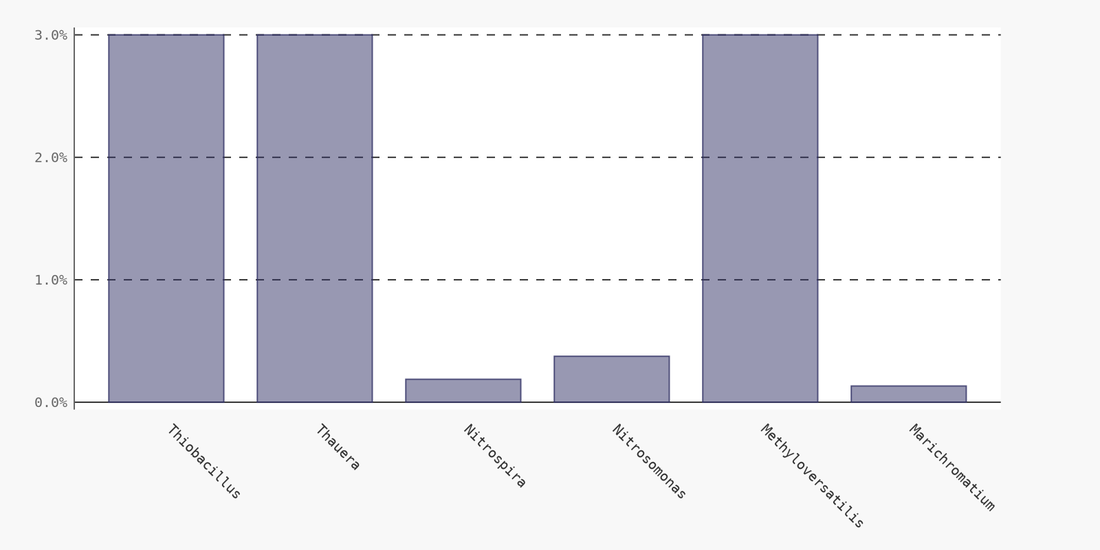One of the fun things about wastewater microbial community analysis (MCA) is that we can often tell what type of influent the plant is seeing without any prior knowledge. We can even identify some operational challenges facing operators. As an example, we recently received a sample from a refinery located on the Texas Gulf Coast, no information about the current operating conditions, just a request for MCA. The results were really quite interesting (see graph, below).
But, the interesting organism in the chart is Marichromatium. This is a genus of purple sulfur bacteria. While these microorganisms can photosynthesize when necessary, in the MLSS they can live off of organic acids. But, the really interesting part is that Marichromatiumrequires a reduced sulfur compound (sulfides) for growth.
So, the MCA strongly suggests that the facility is refining a high-sulfur crude. Furthermore, the sulfides are getting into the influent water, where they impact operations. The ammonia-oxidizing and nitrite-oxidizing bacteria (Nitrosomonas and Nitrospira, respectively) barely make up 0.5% of the sequencing reads – a typical refinery would have 1.5 to 3%. Sulfides are known to inhibit the growth of these two fragile organisms.
This is a great example of how the microbial community analysis both identifies a problem with the biomass (a low nitrifier population) and the cause (chronic toxicity due to sulfide exposure).


 RSS Feed
RSS Feed